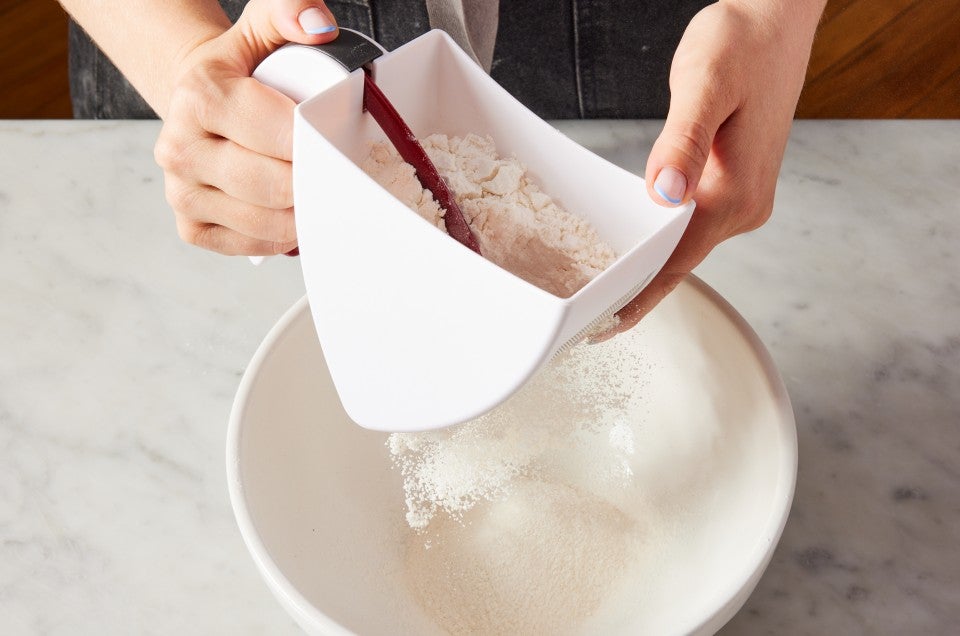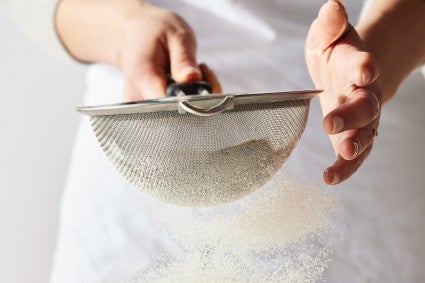Do I really need to sift flour?
Sifting flour can be annoying — here’s why to (sometimes) do it.


Most old-fashioned recipes call for sifting flour and other dry ingredients when baking, but many modern recipes skip this step. Do you really need to sift flour? Occasionally — but for the most part, not anymore.
A sifter is a tool that agitates and pushes dry ingredients like flour, cocoa powder, or confectioners’ sugar through a mesh sieve, eliminating any clumps or lumps. The same effect can be achieved by tapping the ingredient through a fine-mesh strainer.
Sifting flour used to be an essential first step for home cooks, as flours ground in small mills varied a lot in texture and quality and sometimes included extraneous chaff, seeds, or even insects. Today’s commercially milled flours, however, are very finely ground, refined, and well-inspected (no bugs here!). In other words, you don’t need to sift them to guarantee successful baking.

While sifting flour isn’t as necessary today, there are some situations when sifting can improve your baking:

If you don’t have a sifter or sieve, you can approximate sifting by using a whisk. Add your flour to a large bowl or other container, then use a balloon whisk to mix it well until light and fluffy. This will achieve the same goals of breaking up any clumps and aerating the flour, though the results won’t be quite as fine as with a sifter or fine-mesh strainer.
A Scoop & Sift Sifter is handy for any sifting in your future baking, like if you're making this Lemon Chiffon Cake.


